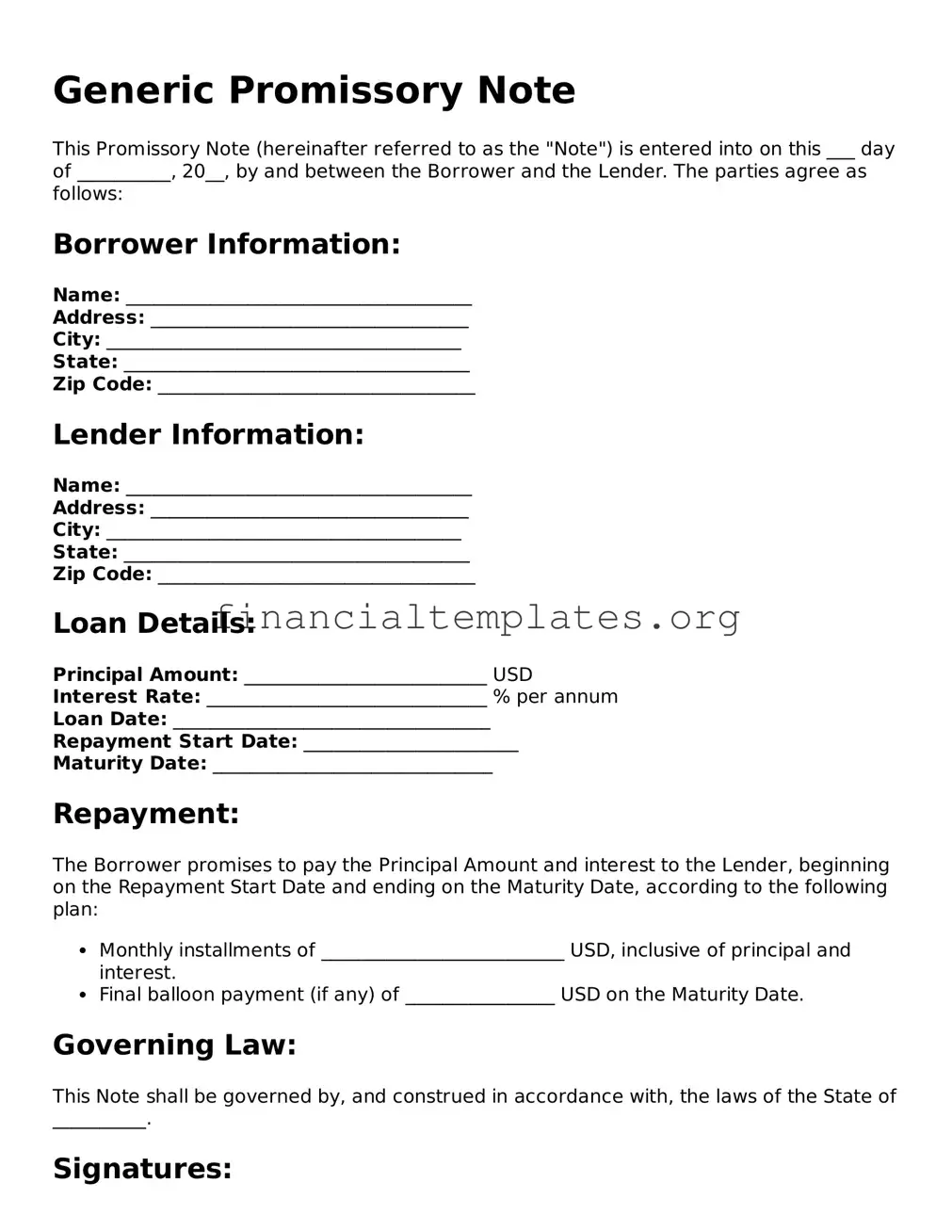A promissory note, a written promise to pay a certain sum of money, shares similarities with a Loan Agreement. Both documents outline the terms under which money is borrowed and must be repaid. However, a Loan Agreement is more comprehensive, covering additional details such as the repayment schedule and consequences of default. Essentially, while a promissory note may serve as a simple IOU, a Loan Agreement offers a more formal and detailed financial commitment between the parties involved.
Mortgage Agreements also bear resemblance to promissory notes, with the main similarity lying in their use to secure loans with property. In a Mortgage Agreement, the borrower agrees to pledge real estate as collateral for the loan, which is detailed in the promissory note. The key difference is that the promissory note acts as evidence of the debt itself, whereas the Mortgage Agreement secures the note with the property, specifying the legal ramifications should the borrower fail to repay.
IOUs, short for "I owe you," are informal documents acknowledging debt, much like promissory notes. However, while an IOU typically notes the amount owed and the debtor, it lacks the detailed repayment terms, interest rates, and legal protections found in a promissory note. Thus, while both signify acknowledgment of debt, promissory notes provide a more legally binding and detailed agreement between the lender and borrower.
Another document similar to a promissory note is the Personal Guarantee. This guarantees that an individual will fulfill a commitment or repay a debt, usually in the context of business loans or leases. While a promissory note binds only those who sign it to the repayment of a debt, a Personal Guarantee extends the responsibility to the personal assets of the guarantor, providing an additional layer of security for the creditor.
Deeds of Trust are used in some states as an alternative to traditional mortgages, functioning alongside promissory notes in the process of securing a loan with property. While the promissory note serves as the borrower's pledge to repay the loan, the Deed of Trust transfers the legal title of the property to a trustee until the loan is paid in full. This arrangement provides another method of ensuring the lender's investment is protected.
Credit Agreements, which encompass terms under which credit is extended by a lender to a borrower, share elements with promissory notes. Both documents outline the amount of money loaned, the repayment schedule, and the interest rate. However, Credit Agreements are typically more complex and can involve revolving lines of credit, unlike the typically fixed sum referenced in a promissory note.
Installment Sales Contracts, utilized when purchases are made on a payment plan, also resemble promissory notes. These contracts detail the purchase price, down payment, and the amounts and dates of installment payments, very much like a promissory note details repayment of a loan. The main difference lies in the context; while promissory notes can be used for any loan, Installment Sales Contracts are specific to the sale of goods.
Bond Issues represent an investment in which the investor loans money to an entity (corporate or governmental) that borrows the funds for a defined period at a fixed interest rate, similar to the interest and repayment terms found in a promissory note. Although both involve a promise to repay the amount borrowed with interest, bonds are typically used for raising capital by companies or governments, offering more complexity and regulatory oversight than a promissory note.
